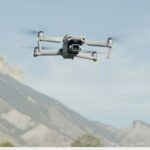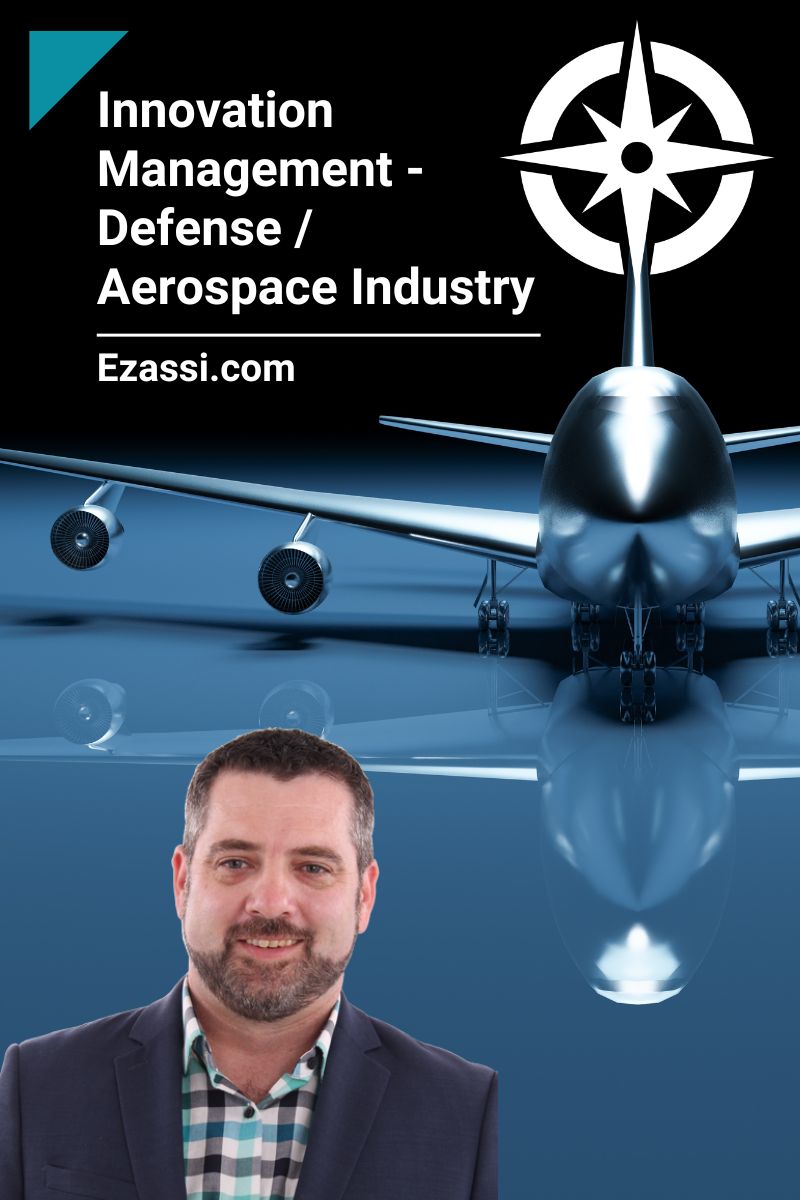
Your industry demands excellence in cross-functional research, engineering, operations, and quality manufacturing teams to secure successful outcomes. Idea Management Software supports confidential company, vendor, and client ideation and brainstorming. Pipeline Management Software maximizes collaboration and teamwork effectiveness. Technology Discovery Software tracks emerging technologies, new patents, disruptive startups, SMEs, and potential partnerships. Ezassi’s Innovation Management platform supports organizational growth and innovation with powerful tools for ideation, collaboration, and technology scouting.
Don’t limit opportunities and impact; provide your Innovation team a full solution suite from Ezassi.
Aerospace and Defense Industries must constantly push the boundaries of innovation to overcome a multitude of challenges. In today’s rapidly evolving world, one of the most pressing concerns is cybersecurity in aviation. With the increasing connectivity of aircraft, the industry faces new and sophisticated security threats that demand innovative solutions. Another critical challenge that the industry must address is sustainable aviation. As emissions standards become more stringent, it is imperative for aerospace and defense companies to develop eco-friendly propulsion technologies that not only meet regulations but also reduce the environmental impact of air travel. The pursuit of advanced materials is also an ongoing priority for our aerospace and defense clients. They are constantly seeking novel materials that can enhance performance while simultaneously reducing weight and costs. This drive for innovation in materials plays a crucial role in creating more efficient and sustainable aircraft.
By implementing a systematic innovation strategy and providing critical support to R&D teams, the Aerospace and Defense Industries can shape the future of aviation and exploration. Our advanced discovery tool aids in this process by providing valuable insights and data from a wide range of global sources. It empowers industry professionals to stay ahead of the curve, identify cutting-edge technologies, locate potential partners, and find subject matter experts who can contribute to overcoming these challenges. With our tool, you can save significant time and resources, enhance your targeted searches, uncover related technologies, and ultimately achieve cost savings. Join us in shaping the future of aerospace and defense by harnessing the power of innovation and leading the way in this crucial industry.

Engineer safer, efficient Engine Health and Usage Monitoring Systems for Aerospace.

Rockets, robotics, and drone technologies impacting Aerospace and Defense sectors.

Improve technology scouting processes and performance with Ezassi research services.
The rapid pace of digital transformation presents unparalleled opportunities for growth and innovation. However, it also brings forth significant risks and challenges. To address these, collaborative efforts are necessary to establish shared international leadership to shape guidelines for emerging technologies like artificial intelligence (AI).
The United States AI Safety Institute (AISI), positioned by the National Institute of Standards and Technology (NIST), plays a critical role in advancing the science and adoption of AI safety across various risks, including those related to national security, public safety, and individual rights. Given the increasing capabilities of AI and its potential for both benefits and harm, the defense and aerospace sectors should closely monitor these developments and its published AI Terminology Standards. AISI aims to ensure the safe practice of artificial intelligence with strong, responsible strategies and leadership such as Adam Russell, the Chief Vision Officer, and Paul Christiano, Head of AI Safety.

European policymakers are promoting investment in DefenseTech, and the European Commission introduced a defense industrial strategy with a goal to achieve 40% of equipment jointly procured among EU member states by 2030. However, a key challenge to this growth is institutional investors and their restrictions and ethical concerns around weapon systems.
One organization marching forward despite European investor reluctance and the regulatory landscape is British defense contractor 4GD. Founded by ex-Royal Marines, it aims to elevate military and law enforcement training standards by incorporating wireless humanoid robotic targetry and integrated, immersive reality technology into real-world operation scenarios. Human performance data capture and the use of SmartFacility simulation environments contribute significantly to military readiness and effectiveness in urban warfare preparation.

The entire world is witnessing SpaceX’s lucrative evolution into a key player in defense contracting. With close ties to U.S. military agencies, SpaceX is expanding its role beyond commercial space exploration in programs such as Starshield. The company’s involvement in launching national security satellites and providing reliable transportation for military payloads marks a significant shift in the aerospace industry. As SpaceX strengthens its partnership with government agencies, it positions itself as a vital asset in ensuring national security and advancing space exploration initiatives.

The importance of safety and reliability in aircraft manufacturing demands new technology discovery and improved stakeholder collaboration. Alaska Airlines Flight 1282 and the technical problems and safety issues of the Boeing 737-9 are an opportunity to discuss how major corporations and their innovation ecosystems best ideate, communicate, manufacture, and maintain quality, high performing products.
Boeing has encountered significant safety and quality challenges in recent years. To effectively address these issues, it is crucial for a large and technically advanced aerospace company to incorporate robust innovation management. By implementing a renewed innovation strategy, this company, and others like it, can enhance quality control, resolve technical issues faster, and improve communication and transparency throughout the organization. Through this approach, a company can proactively identify and address obstacles before they escalate into major problems, or worse, investigations by the NTSB following failures or crashes. This proactive stance significantly reduces the risk of accidents and enhances overall safety and clarity of mission across the organization.
Innovation management also fosters improved and extensive communication among various departments and stakeholders. By adopting a unified platform and collaborating with customers, suppliers, and regulators, an aerospace organization using modern innovation management tools will boost brand loyalty, dependability, and transparency.

The Mars Ingenuity Helicopter was the first powered extraterrestrial aircraft. It concluded its mission on Jan. 18, 2024, due to damage to its rotor blade, ending a historic journey of aerial exploration on Mars. Originally designed for five flights, this 1.2-meter bladed aircraft with solar panel charged Lithium-ion batteries surpassed expectations, completing 72 aerial scouting flights over nearly three years. Its primary goal was a technology demonstration of powered flight on another planet, which it achieved as early as April 19, 2021. While on its mission it achieved new altitude and airspeed records on the Red Planet in the name of experimental flight testing for future space exploration. A dual carbon fiber rotor system for the next generation of Mars helicopters is currently being tested in the 25-foot space simulator at NASA’s Jet Propulsion Laboratory and has reached near supersonic speeds.
NASA partners with outside companies on major innovation objectives. Collaborations cover research and technologies across various areas such as:
The partnerships are part of NASA’s transformation agenda, which aims to leverage the capabilities and resources of the U.S. industry to support the Mars Exploration Program, the Artemis Program, and all future exploration initiatives to the Moon and beyond. These collaborations also demonstrate NASA’s commitment to fostering a culture of innovation and excellence in its operations and services as well as highlight their commitment to advancing science and technology through exciting innovation.


Companies aim to ignite an innovative culture and outperform the competition in today’s fast-paced market. Our tools provide the spark you need to inspire and align project teams, equip intrapreneurs for innovation, and help you lead in disruptive tech. Learn more by scheduling an introductory call with our Innovation Management experts!